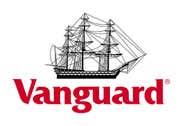
|
An investment portfolio is a collection of investments. Ideally these investments were chosen to work in harmony to help the investor achieve their goals and also to provide a certain degree of diversification so that you are not putting all your eggs in one basket.
An investment portfolio is a combination of asset classes such as stocks, bonds and cash. The portfolio might be further divided into sub-asset classes like large cap stocks, mid-cap stocks, small cap stocks and international stocks. On the bond side you might have some short-term bonds, intermediate-term, tax-exempt municipal bonds and foreign bonds.
Each asset class and sub-asset class can be further sub-divided.
Investment vehicles used might include mutual funds, ETFs, individual stocks and bonds and others.
You might view all of your investment holdings across various types of accounts as a single overall portfolio, or you might segment certain portions of your holdings as separate portfolios. For example your account for college savings might be one portfolio and the money earmarked for retirement might be managed as another.
Ideally a portfolio consists of a variety of investments, not all of which are highly correlated to each other.
Let’s look at a simple example using three Vanguard index mutual funds:
Vanguard Total Stock Market Index (ticker VTSMX) – A market cap weighted fund replicating the total U.S. stock market.
Vanguard Total Intl Stock Index (VGTSX) – A market cap weighted index fund covering non-U.S. developed and emerging market stocks.
Vanguard Total Bond Market Index (VBMFX) – A market cap weighted fund largely replicating the U.S bond market.
Over the five years ending February 28, 2017, these funds were correlated to each other as follows:
|
|
Vanguard Total Stock |
Vanguard Total International Stock Market |
Vanguard Total Bond Market |
|
Vanguard Total Stock |
|
0.79 |
-0.12 |
|
Vanguard Total International Stock Market |
0.79 |
|
0.08 |
|
Vanguard Total Bond Market |
-0.12 |
0.08 |
|
Source: Morningstar
A correlation of 1.00 between two investment vehicles mean that their performance is perfectly tied to each other, while a correlation of zero means there is no relationship between the two investment vehicles being compared. At 0.79, the Vanguard Total Stock Market fund and the Vanguard Total International Stock Market fund are highly, but not perfectly, correlated.
But a correlation of 0.08 between the Vanguard Total Bond Market Fund and the Vanguard Total International Stock Market fund means that there is very little relationship in the performance of these two funds.
The correlation of -0.12 between the Vanguard Total Bond Market Fund and the Vanguard Total Stock Market Fund means that there is actually an inverse relationship.
Here is a look at the risk and return of three portfolios using combinations of these three funds. These results are via Morningstar Advisor Workstation’s hypothetical portfolio tool.
The simulation assumes:
· Investments were purchased on 4/29/1996 with results through 2/28/2017.
· There are no taxes on the portfolio, as if held in a tax-deferred account such as an IRA.
· The portfolio was rebalanced back to the original allocation semi-annually.
· An initial investment of $50,000.
Conservative 40/60
· Vanguard Total Stock Market 30%
· Vanguard Total International Stock Market 10%
· Vanguard Total Bond Market 60%
Moderate 60/40
· Vanguard Total Stock Market 45%
· Vanguard Total International Stock Market 15%
· Vanguard Total Bond Market 40%
Aggressive 80/20
· Vanguard Total Stock Market 60%
· Vanguard Total International Stock Market 20%
· Vanguard Total Bond Market 20%
Here are the comparative results for these model portfolios:
|
|
Growth of $50,000 |
Cumulative % return |
Loss in Value 2008 (%) |
Loss in Value 2002 (%) |
% of variability in return compared to S&P 500 (last 10 years) |
% of modeled return compared to S&P 500 (last 10 years) |
|
Conservative 40/60 |
$193,435 |
286.87% |
-14.03% |
-2.26% |
44.25% |
72.80% |
|
Moderate 60/40 |
$211,527 |
323.05% |
-22.78% |
-7.81 |
63.86% |
78.19% |
|
Aggressive 80/20 |
$222,267 |
344.53% |
-31.02 |
-13.56 |
84.84% |
80.81% |
Source: Morningstar Advisor Workstation
As you would, expect, the conservative portfolio had the smallest loss in 2008 of 14.03%. This compares to a loss for the S&P 500 Index of 37.00% that year. As you would also expect, this portfolio had the smallest rate of growth over the time period with an ending value of $193,435.
The aggressive portfolio had the largest decline of the three in 2008 with a loss of 31.02% for the year. This portfolio had the largest increase in value over the period with an ending value of $222,267.
The point is that combining different investments in various allocations will have an impact on both the growth of your portfolio and the downside risk over time.
Investing 101: Conclusion
-
 Investing
InvestingVFFVX,VTTVX: Vanguard Target Date Funds Overview
Learn about target-date retirement funds offered by Vanguard. Discover how portfolio managers automatically rebalance the portfolios for the funds. -
 Investing
InvestingAre Vanguard Mutual Fund Fees Competitive?
Discover how the fees and expenses charged by Vanguard's family of mutual funds compares to those of other competing mutual fund families. -
 Investing
InvestingThese Top Vanguard Funds Will Help You Diversify
These Vanguard funds offer diversification and low fees for retirement savers. -
 Retirement
RetirementThe 8 Most Popular Vanguard Funds for a 401(k)
Learn about some of the mutual funds in Vanguard's lineup that are popular among 401(k) investors, and find out why you should consider them. -
 Investing
InvestingVanguard Total Stock Index Vs. Vanguard 500 Index Fund
Explore detailed analyses of the Vanguard Total Stock Market and Vanguard 500 Index funds, their characteristics, major differences and portfolio uses. -
 Retirement
Retirement3 Vanguard Target-Date Retirement Funds
Vanguard offers mutual funds for target retirement dates for every five years from 2020 to 2065. They're ideal for investments of at least 10 years. -
 Investing
InvestingAre Vanguard Funds Good for Your Portfolio? An Unbiased Review
Find out why funds offered by Vanguard, the leading provider of low-cost mutual funds, index funds and ETFs, are good for your portfolio. -
 Investing
InvestingVanguard Mutual Funds Overview (VFINX, VFIAX)
Learn about Vanguard Mutual Funds, including its history, investment management philosophy, client base, mutual fund offerings, leadership and more. -
 Investing
InvestingVanguard Balanced Allocation Funds Overview
Learn about the basics of Vanguard Funds and how their Balanced allocation mutual funds and ETFs differ from other investment managers.


